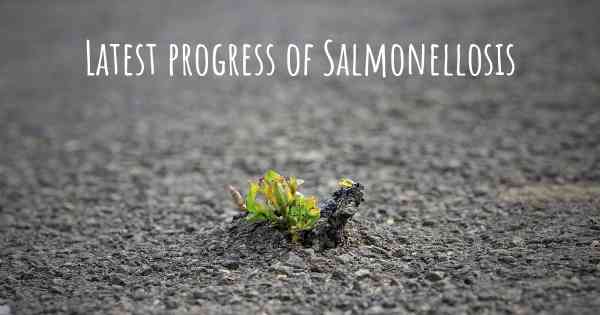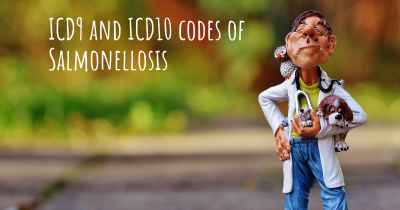What are the latest advances in Salmonellosis?
Here you can see the latest advances and discoveries made regarding Salmonellosis.

Salmonellosis is a common bacterial infection caused by the Salmonella bacteria. It is typically transmitted through contaminated food or water, causing symptoms such as diarrhea, abdominal pain, fever, and vomiting. Over the years, significant advances have been made in understanding and managing this infectious disease. Let's explore some of the latest developments in the field of salmonellosis.
1. Improved Diagnostic Techniques
One of the key advancements in salmonellosis is the development of more accurate and rapid diagnostic techniques. Traditional methods involved culturing the bacteria from patient samples, which could be time-consuming. However, newer molecular techniques like polymerase chain reaction (PCR) and next-generation sequencing (NGS) have revolutionized the diagnosis of salmonellosis. These methods allow for the detection and identification of Salmonella DNA in a matter of hours, enabling prompt treatment and better disease surveillance.
2. Vaccines for Prevention
Vaccination plays a crucial role in preventing salmonellosis, especially in high-risk populations. In recent years, significant progress has been made in developing vaccines against Salmonella. For instance, live attenuated vaccines have shown promising results in protecting against various Salmonella serotypes. Additionally, researchers are exploring the use of subunit vaccines, which contain specific components of the bacteria, to induce a protective immune response. These advancements in vaccine development offer hope for reducing the burden of salmonellosis worldwide.
3. Antimicrobial Resistance Surveillance
Antimicrobial resistance (AMR) is a growing concern in the treatment of salmonellosis. Salmonella strains resistant to commonly used antibiotics can lead to severe infections and increased mortality rates. To combat this issue, there has been a significant focus on surveillance programs to monitor AMR patterns in Salmonella isolates. This data helps guide treatment decisions and informs public health strategies to prevent the spread of drug-resistant strains. The integration of advanced molecular techniques in surveillance efforts has improved the accuracy and speed of identifying AMR in Salmonella, aiding in the development of targeted treatment approaches.
4. Genomic Epidemiology
Advancements in genomic sequencing technologies have revolutionized our understanding of the epidemiology and transmission dynamics of Salmonella. By sequencing the genomes of Salmonella isolates from different sources, researchers can identify genetic similarities and trace the origin of outbreaks. This information is crucial for implementing effective control measures and preventing further spread of the bacteria. Genomic epidemiology has also helped identify specific virulence factors and genetic markers associated with increased pathogenicity, enabling better risk assessment and surveillance.
5. Food Safety Measures
Efforts to improve food safety have been instrumental in reducing the incidence of salmonellosis. Regulatory agencies and food industries have implemented stricter guidelines and monitoring systems to prevent contamination of food products with Salmonella. These measures include enhanced sanitation practices, regular testing of food samples, and implementation of Hazard Analysis and Critical Control Points (HACCP) systems. Ongoing research and technological advancements continue to refine these food safety measures, ensuring safer food production and reducing the risk of salmonellosis outbreaks.
Conclusion
Salmonellosis remains a significant public health concern, but recent advances have greatly improved our ability to diagnose, prevent, and manage this infectious disease. The development of rapid diagnostic techniques, vaccines, and the integration of genomic epidemiology have enhanced our understanding of Salmonella and its transmission dynamics. Additionally, surveillance programs and food safety measures play a crucial role in preventing and controlling salmonellosis outbreaks. Continued research and collaboration in these areas will further advance our knowledge and help mitigate the impact of salmonellosis on global health.








